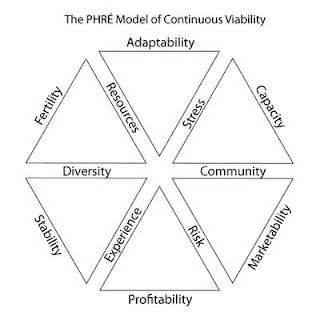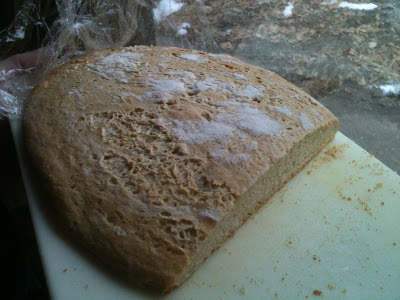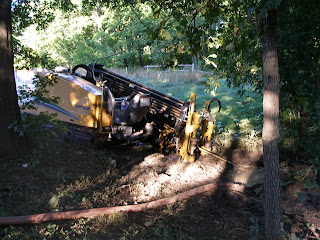A New Model for Analyzing Sustainability
Agro Ecosystem Analysis
Daniel Halsey-UM
Ashley Reas-ISU, Shane Edelen-ISU

Introduction
“... if this is to be a permanent nation we must save this most indispensable of all our God-given assets -- the soil, from which comes our food and raiment. If we fail in this, remember that much sooner than we have expected this will be a nation of subsoil farmers.” --- H.H. Bennett, 1933
With the declining availability of fossil fuel and increased costs, agricultural producers are pressured more and more to deliver food for a growing world with less off-site input. The viability of farming itself is based on the ability of farmers to maintain a reasonable standard of living while also maintaining equipment and property. In recent years commodity futures, predatory agrochemical company practices have threatened the viability of small and large farms. Along with this, modern farming practices have depleted the capacity of soil to regenerate fertility without fertilizer. Economic pressure has forced many operators to go with “agrochemical proven “ techniques and have trapped them in an unending cycle of seasonal debt and soil asset depletion.
The distance the farms have traveled from the early 20th century’s subsistence farming through dust and depression to modern farming has resulted in a similar predicament. The soil has been depleted. Unfortunately this time the carbon fuels, which were low in cost then, are sixteen to twenty times in price. Environmental and government concerns complicate the issues. Past techniques and asset management preclude many farmers from making changes to well established patterns.
At this point we are reassessing the viability of a new model, the sustainable farmstead. A reflection of the early farming practices combined with the recently documented cycling of nature’s own nutrients using the animals and plants farmers already have available to achieve balanced and stable soil ecology.
“Land, then, is not merely soil; it is a fountain of energy flowing through a circuit of soils, plants, and animals.” --- Aldo Leopold, A Sand County Almanac, 1949
In our process to develop a new model for agroecosystem analysis, we started with a common formula for success in small business. “Experience and risk equal return. “
Process toward Building the PHRE' Model
Where as the risk level of any action, be it bakery sales or rock climbing, is directly related to the experience of the practitioner. Increased experience reduces relative risk for a given return. Using this premise we started changing the factors of the formula to see if other goals might be equated the same way. We began by changing return to profitability since it was a continuous goal rather than short-term result. The initial triangle worked.
We began making our way around a series of triangles with different goals that were a condition, rather than a return. After many trial terms throughout the model we came to our last and hardest term. Finally all the pieces fell into place and our model was complete. All the factors seemed to relate and intersect. We knew we had many trials to test the model and set about traveling the circuit.
What we found, was that some of the goals could also be factors and factors goals depending one the situation. The Thompson and Bruns farms had stress as a factor on their farms, yet the strength or factor to get through it flipped positions. The model was actually quite fluid and dynamic in its ability to adapt to differing circumstances. Instead of being rigid, dogmatic, and still, the guide facilitated the process of inquiry.
The PHRE' model itself as we call it, is not quantitative, but qualitative. It balances the forces, goals and factors that make up each situation triangle. If pressed the triangle themselves can be trisected to visually represent the weight of factors in the “equation”. The resulting narrative from the inquiry process itself seems more valuable than the degree any one factor may play. In the following pages we will explain the methodology for inquiry with the PHRE' model.
What we understand from these relationships is that we cannot make statements that a farm is either sustainable or unsustainable. It depends upon which context it is being viewed. We can only assess the relationships that are interconnected with the farm to assist in reaching a necessary outcome by working with the farmers’ goals.
The Holon Influence
A contributing influence to the PHRE’ model’s design was Bill Bland’s “holon” methodology. Bland’s emphasis is placed on looking at the farm entity within different contexts. Experience and backgrounds of all who view the farm are diverse. One person may see the farm from one perspective and another see it viewed in a completely different way.
The PHRE’ diagram draws on Bland’s process of analysis that “every decision or action has implications in more than one [context].” (pg. 4) The PHRE’ diagram is assembled in a way that pieces of each pie may be taken out and assessed individually or, as Bland suggests, viewed together that can show how the farm functions as a larger entity. “To appreciate a holon requires nimbly and rapidly switching between seeing the entity as a whole, to seeing it a s part of a larger whole and back.” (pg. 5)
Influence from Bland’s explanation of soft systems methodology (SSM) was also another contributing component to the PHRE’ model. In SSM “a specific problem situation is not necessarily identified” (pg. 6) The PHRE’ model does not want to target where each problem is, it wants to look at the farm functioning within various contexts. The model may present an area that demonstrates a problematic situation, but this does not necessarily mean there is a problem. It suggests the situation might need to be analyzed further.
Rules for the PHRE' Model
The PHRE’ model is in no terms a static method of assessment. It is a fluid tool for analyzing components that make up operations assets and the factors and forces those components must address. When using the model, the outside goals are sometimes switched with an adjoining factor to balance the goal. In the case of Bruns vs. Thompson the factors are Adaptability, Resources and Stress. When stress rises from an external source, Bruns’s have fewer resources and use their goal of adaptability to relieve the stress. In Thompson’s case vast resources are used to relieve the stress since adaptability is more problematic. Each time the switch is made the central factors, spokes, must align. A relationship between opposing spokes must be maintained as adjustment are made. It is advised to not make more than one at a time as the model is used.
Methodology
Spokes:
The goal is to build a narrative describing the factors and how the operation is prepared to respond or achieve the outlying goals using the adjacent factors (Spokes).
- Experience balances Stress
- Resources or Adaptability balance Risk
- Either may then enhance Fertility
- Diversity balances Community (monoculture)
Definitions
The following explains the various components of the PHRE’ model.
Outer Goals
Outer goals demonstrate the objectives the farm is trying to achieve. The following are the model’s outer goals defined in no particular order.
- Adaptability: The ability to adjust assets and resources to stabilize or correct variables (Threats) that are presented to a farm.
- Capacity: The sum total of an inexhaustible farm assets, ability, experience and knowledge (Strengths) to counter threats from external forces and to correct and internal limitations. The farm’s ability to manage produced yield and withstand change.
- Marketability: The ability of the farm and its products to sell on the open market and attain client & consumer appeal.
- Profitability: The ability or likelihood of the farm to make a profit and be economically viable within and/or above its monetary goals.
- Stability: Farm/entity able to rebound from low or high points and maintain a consistent production through risk, stress, and change.
- Fertility: The ability of the soil to grow crops without amendments.
Inner Factors
The PHRE' model’s inner factors are what the model’s outer goals use to remain in balance. Inner factors maintain the model’s unity. The following inner factors are listed in no particular order and again, can be interchanged with inner factors if the farm’s situation sees fit.
§ Resources: The actual supply of materials, funds, good will and time at the disposal of the farm.
§ Stress: May be a mechanical, physical and/or mental strain (Threat) affecting and potentially diminishing the capabilities of the farming system. Limits the farm system’s capacity.
§ Community: The network of informational, social, and material resources (Strengths) important to a farm’s operation. A community of commerce and people willing to share in risk and reward for the right to purchase the farm’s goods. (i.e. Farms, towns, cities, states and countries that are interconnected with the farm)
§ Risk: The chance of loss (Threat) inherent in any action or investment. (High vs. Low) with marketability or profitability (Opportunity) the level of risk is directly related to past experience (Strength) and its application to the current situation. Necessary factors that allows a farm to possibly increase its monetary income.
§ Experience: The life history of a farm, farmer, family or social network, which is accessed, to solve current problems or improve expected results. Used to increase monetary capital or farm’s viability.
- Diversity: The multiple sources, functions and resources for operations on a farm. A population with varied characteristics (Strength) that allow differences to exist in close proximity (Strength) while building capacity. (Opportunity) If something goes wrong other areas can be relied on by the farm/entity to survive.




Comments